What to Expect When Building Your Website With Millennial Web Development

What to Expect When Building Your Website With Millennial Web Development
Whether it’s a brand new site for a new business, or an update for an older site, the process of designing, developing and launching a website can be a little daunting. In this article we want to fill you in on how the process works, how you should prepare, and basically what to expect throughout. Get ready to feel more confident!
What you’ll learn from this article:
- What you can do – now! – to make the process as smooth as possible
- How the process works – the stages of bringing a website from conception to completion
Part 1 – Collaboration:
How you should prepare
Building a professional website is a highly collaborative process, particularly in the beginning stages. In order to ensure that your vision is brought to life as easily and accurately as possible, it’s good to know how you should prepare before our first meeting so that we can be as efficient and accurate as possible. Here’s our guide. To quote a young Tom Cruise, “Help us help you!”
1. What is your decision-making process and who are the stakeholders?
This may seem like a strange thing to start with, but in fact it’s crucial to having a good experience of building a website. You will probably only have one website, but you probably already have at least a few different ideas of what it should look like. High quality collaboration is crucial to building a great site. It’s important to ask some hard questions before you begin the process as it will make everything go more smoothly:
- Are decision making powers transparently understood?
- Who has the final say, and is this person involved in the process or more removed?
- How long do you envision this process taking?
- Who is writing the content?
Asking these questions and discussing how the process will go with all the stakeholders is a crucial step that is too often overlooked. We often find that a website is only as good as the quality of collaboration that goes into it!
2. What are your business goals for your website?
There are a wide variety of purposes that a web page can have, and it’s important for you to have an idea of what you’d like your website to be doing for your business.
- Will it be primarily to sell merchandise?
- Will it be more promotional, more of a calling card?
- Is it your main lead generator? Or is it a compliment to other lead-generating activities?
- How do you expect people to find your website?
- Who is your target audience? What kind of experience do you want your audience to have? What do you want them to remember about your brand? What actions do you want them to take?
3. What’s your budget?
Establishing a budget is a must for planning the scope of a project, and will help us come up with a game plan and a time frame for the project. Many people don’t understand the costs associated with a website, and it can be hard to approach a design and development agency with a realistic number. Here are some questions that you may want to ask yourself so that it is easier to quote your job.
- Generally speaking, how many pages would you like the site to be?
- Are you doing e-commerce?
- Have you already purchased server space and a domain name?
- How often will you be adding content and changing the site?
- Who will be doing the content writing?
- What tasks can realistically be done in-house, if any? Does someone on your team know HTML and CSS?
- Do you already have visual assets (logo, photos, graphics, video) that you want to include, or do you need to create everything?
Business websites vary greatly in cost. A more simple, template-based website usually begins at around $3500. Large, data-based driven, e-commerce or otherwise highly interactive sites can cost many times that. Coming in with a ballpark idea of what you are expecting to spend can help to determine what approach we should take, so that we can get as close as possible to your dream website while staying within your budget.
4. What’s your vision?
Every brand is different, and your website should present your brand in its most unique and exciting qualities. Websites can either pull clients in, enticing them with a bold vision, or they can repel clients, presenting as outdated, inelegant, or uninspiring.
While we can all agree that a website can either be “great!” or “meh”, the specific language around what works and what doesn’t is rather abstract. For this reason, it’s important to develop a process where we can make good decisions about these abstract questions. Here’s where a mood board or an inspiration list comes in. We like to use a shared folder to pass images, colors, ideas, sketches, and words back and forth. We then use this folder to develop other related ideas, eventually coming to the design scheme that best communicates your brand. The more we all have to work with, the closer we can get to your dream site. The goal is that the finished site displays your unique brand in a way that you didn’t even know was possible!

Part 2 – Milestones:
The major steps of the web development process
Once you’ve prepared everything you can on your end, we can begin the design and development process together.
A lot goes into building a professional website. Here’s a general overview of the milestones that represent the major stages of creating your website. Each stage will have a set length of time which tends to change depending on your project’s size and complexity.
1. Planning
For every big vision you need a detailed plan. The planning stage is a highly interactive stage of the process, where you work closely with the design and development agency to determine how you envision the website, from the bigger picture questions to the smallest details. Some specific things that should be established in the planning stage are:
- A list of reference sites that will guide the design and development of the site. Reference sites are a great way of getting onto the same page about the direction the site will take.
- Your goals for the site, who your target audience is and what specific features you’d like to include as well as any technical details.
- A site map: how many pages are being planned and how is the navigation organized? A site map also helps us determine the number of different page designs need to be produced: for instance, if a site will have 15 pages, but six of them are “service” pages, then it may only need nine different page designs.
2. Design
In the design stage, we start to give life to some of the ideas discussed in the planning stage. Here, we establish a site structure and a visual layout. After this phase, the general design and layout of your website will be well established, even if it will be missing some specific content and other features. Some important elements of the design phase are:
- Color scheme, visual elements, general spacing rules, and other visual decisions.
- Mock-ups, or visual representations that are easily modified before coding begins.
- UX design elements – including looking at the purchasing or converting processes from a design point of view.
- Reviews, tweaks and ultimately, your approval.
3. Development
Here is where we do the majority of the programming/coding, all the while with our project overview document in mind to ensure that we are keeping your vision intact, and testing as we go to ensure functionality. The development stage involves:
- Building a development framework and coding templates for each page of your site. We do this by creating modules that can be edited by YOU, so that you can continue to easily add to and alter the content on the site. A website is not a static thing, and our approach to development enables you to alter your website as you grow as a business.
- Establishing a communication protocol with a database or inventory in the case of an ecommerce site.
- Developing and testing all interactive elements.
4. Website Launch
Now we prepare your website for public viewing by tweaking any final design elements and testing the interactive features to ensure smooth user experience. We’ll also be moving your website to its permanent web server, and voila, you’re off to the races!
5. Ongoing Maintenance
Even after the site launches, you may need help making changes, or you may need your website to reflect new aspects of your business. We offer great deals on ongoing maintenance for all of our development clients. We can take care of site backups, security protocols, updates and any small changes that you might require. Websites are evolving things and it’s natural that you will be making some changes to the site, adding content and tweaking processes even after the launch. We’ve done a great job together, and we’re here for you still, making sure that the site continues to function as intended.
Millennial Web Development and You: Building Your Dream Together
So, do you feel more confident now? We told you that you would! Now that you know about the milestones of the process, and what you need to bring to the table, it’s time for us to get to work making your dream website a reality!





